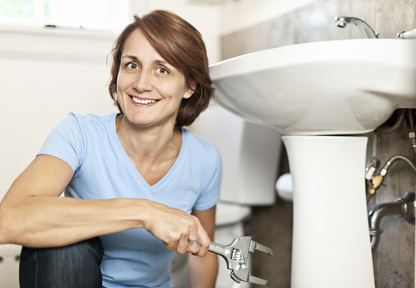They are making several great points regarding Common Causes of Water Damage in a Bathroom as a whole in this article beneath.

The shower room is incredibly vulnerable for damp accumulation and also prospective water damages because of the frequent use water in it. This short article supplies easy inspection strategies to assist detecting water damage hazards.
The regular use water in the shower room makes it extremely susceptible for moist build-up and possible water damages. By examining it regularly, you can lower water associated damages.
The adhering to collection of examinations is simple to perform as well as should be done when in every three months in order to maintain your restroom healthy as well as to prevent possible water damages brought on by the tub, the shower, pipe joints as well as plumbing, sinks, closets, and the commode
Do not overlook performing these assessments and be complete while performing them. Remember that these easy examinations can save you a great deal of cash by offering very early indications for water damages
Bathtub and also Shower
The shower and tub require special focus and upkeep. Examine the ceramic tiles as well as change if broken. See to it that there is no missing cement in between the ceramic tiles. Check and replace fractured caulking at joints where the walls meet the flooring or the bath tub. Clogged drains pipes and also pipes issues will certainly prevent the tub from drying out and may show severe troubles beneath the tub. Seek advice from a professional right away to stop structural damage. Focus on stainings or soft locations around the tub wall surfaces as they may show an inner leakage.
Plumbing
Signs for water damages are tough to find considering that a lot of pipes are installed inside the walls.
Pay unique attention to floor covering and wall surfaces moisture and also spots as they may show an unnoticeable plumbing trouble. Inspect moisture degrees in adjoining areas as well.
Sinks as well as Cabinets
Sinks and cupboards are exposed to dampness and moisture daily and also are typically overlooked. Examine consistently under the sink as well as on the countertop above it. Fix any type of drip in the trap as it might suggest drainpipe issues. Look around the sink, slow-moving draining pipes may indicate a blocked drainpipe. Replace sink seals if they are cracked or loosened.
The Commode
The bathroom is a susceptible water joint. Examine the water lines as well as search for leaks around the bathroom seat, in the pipe, as well as under the water storage tank. If you detect any signs of moisture on the floor around the bathroom, check for leaks in the toilet rim and storage tank seals.
Realize that hanging toilet bowl antiperspirants boosts the opportunities for clogs.
Water Damage Signs In The Bathroom To Avoid Cleanup
Musty smell
This is one of the easiest signs to catch because musty smells are so odorous. The damp, earthy, moldy smell should be a big red flag. The smell will develop when moisture gets trapped in surfaces, and begins to facilitate mold growth. Leaking pipes under cabinets, inside walls, and behind shower fixtures will cause moisture to stay trapped and not dry, which will lead to mold growth and spread. As soon as you notice any musty smells in your bathroom, have it checked for hidden water damage and cleanup signs.
Visible mold
If the smell isn’t there to give it away, sometimes you will actually see mold growth. Finding mold in your bathroom is a serious problem, because mold is very harmful to your health. By the time mold growth is visible, it also means that water damage has already occurred and been present for some time. The only way the mold problem can be resolved is to find the source of the moisture and get it stopped. To safely and adequately remove mold, you need to have professionals handle the remediation. Do not waste any time in getting mold problems addressed, fixed, and sanitized so that you can protect you and your family from the many respiratory symptoms caused by mold exposure.
Damaged floors
Bathroom floors should be able to withstand some exposure to water while still remaining in good condition. However, when excess exposure or water leaks occur, they will begin to damage even the most water-resistant flooring. If you notice any cracking, bubbling, staining, or warping on your bathroom floors, there is probably a water leak somewhere causing the distortion. If you notice areas of the floor have become softer, or even have a spongy feeling, there is probably damage to the subfloor. Subflooring is typically made up of plywood. When plywood is exposed to water or moisture, it will absorb it. Once it has become saturated, the weight of the excess water will cause the wood to swell and soften. Check the floors in your bathroom frequently to catch any of these sings before they lead to damaged subflooring.
Changes on walls
When water leaks behind walls, it will cause changes in the drywall. Peeling plaster, blistering paint, and soggy wallpaper are all good indicators that excess water is building up behind the wall. Water leaking behind drywall will cause it to swell and be soft to the tough. If you start to notice gaps along the trim of your walls, or where tile meets the wall, it could also be a strong indicator that there is a leak behind the wall. Any changes, distortion, or damage on the walls should be evaluated as soon as you notice it to prevent further water damage and cleanup.

I'm just very interested by How to Prevent Bathroom Water Damage and I'm hoping you enjoyed the entire article. Those who enjoyed reading our blog posting kindly be sure to pass it around. Many thanks for your time spent reading it.
Check Us Out
Comments on “Bathroom Water Damage - Ways To Stop This Happening”